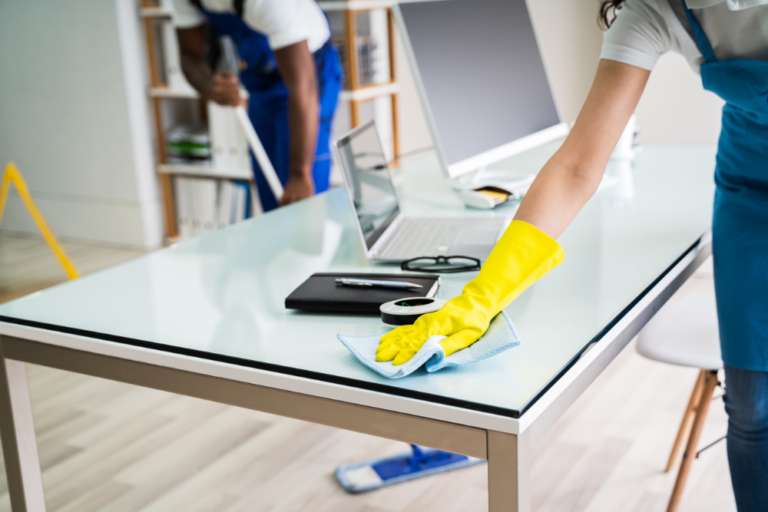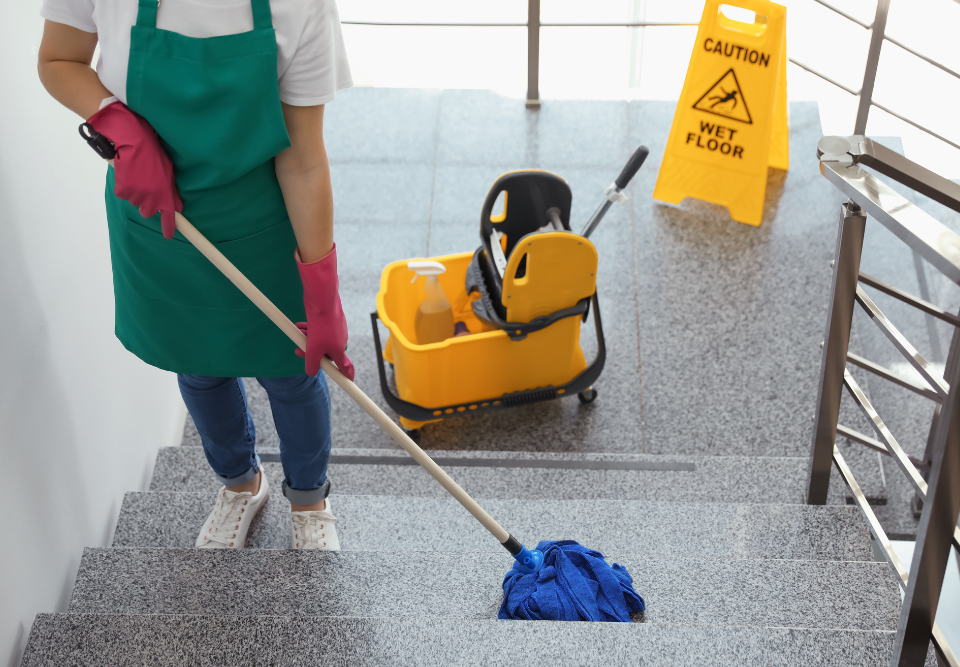
How to Get Rid of Unwanted Furniture in Your Commercial Space
August 18, 2025
The Role of Junk Removal in the Property Management Industry
August 18, 2025Office Cleanouts: How to Organize Your Business Space
Creating a Clear Starting Point for an Office Cleanout
The first step in organizing any office is establishing where to begin. A workplace tends to accumulate stacks of paperwork, outdated furniture, and electronic equipment that no longer serves a purpose. Walking into the space and trying to clean without a plan often leads to confusion. Identifying a starting zone, such as a supply closet or storage room, can make the entire process more manageable. When one area is cleared, it sets the tone for the rest of the office and helps create momentum for the team involved.
Clearing a specific section allows businesses to visualize the progress and avoid the overwhelming feeling that often comes with large cleanouts. Once that first zone is refreshed, employees will see how much easier it is to navigate and work within the updated environment. This gradual approach ensures the project moves forward steadily rather than stalling due to the enormity of the task.
Sorting Through Paperwork and Files Efficiently
Paperwork remains one of the most challenging parts of office clutter. Even in digital-focused companies, old reports, forms, and files pile up. The most effective method of addressing this issue involves sorting documents into categories: items to keep, papers to digitize, and those ready for shredding. By creating clear divisions, the process becomes less stressful, and businesses can prevent valuable information from being lost in the shuffle.
Once the piles are established, dedicating time for digital scanning can help reduce future paper storage. Shredding confidential materials also protects sensitive data from falling into the wrong hands. Having a strategy for paper removal helps free up cabinets and shelves, making way for a more open, streamlined office where employees can access what they need without sifting through unnecessary stacks.
Managing Office Furniture During Cleanouts
Large desks, old chairs, and bulky cabinets often become obstacles when offices attempt to reorganize. Outdated furniture takes up prime floor space and creates barriers for a modern workflow. Handling these items requires planning, as moving heavy pieces can lead to accidents if rushed or disorganized. It is often wise to assign a team specifically for furniture relocation so the process stays efficient.
When deciding which items remain, businesses should evaluate functionality and condition. Pieces that no longer provide comfort or efficiency should be removed, while versatile furniture that supports productivity can be kept. This selective approach reduces waste and ensures that only useful, ergonomic pieces are part of the reorganized space.

Streamlining Technology and Electronics
Technology advances quickly, leaving offices with stacks of outdated computers, cords, and equipment that no longer function. These items can create both clutter and safety hazards if ignored. Sorting through electronics requires extra care since many devices hold data that must be securely erased before disposal. Businesses should establish a process for reviewing, wiping, and recycling each item to ensure responsible removal.
Clearing out unused devices frees up desk space and storage while also eliminating unnecessary distractions. A streamlined setup allows employees to focus on the tools that genuinely support their tasks rather than being surrounded by outdated hardware. By taking the time to properly recycle and replace old technology, companies contribute to a safer and more organized workplace.
Reducing Clutter in Shared Spaces
Break rooms, meeting areas, and reception spaces often become catch-all zones for unused items. Coffee tables stack up with outdated magazines, cabinets hide broken appliances, and shelves store miscellaneous supplies no one uses. Addressing these areas during a cleanout can transform them into more inviting spaces. Employees and visitors alike notice the difference when shared zones are tidy and intentional.
The process involves deciding which items add value to the environment and which simply take up space. By removing the unnecessary, businesses create more welcoming and functional areas. A well-kept reception space makes a positive impression on clients, while organized break rooms give staff a place to recharge without distractions from clutter.
Developing an Organized Storage System
Many offices rely on storage rooms that quickly spiral into chaos. Supplies, seasonal decorations, and outdated materials often end up shoved into corners with little thought. Creating a new system during a cleanout prevents this problem from recurring. Clear labeling, categorized shelves, and proper containers can turn a cluttered storage space into a practical extension of the office.
When everything has a designated spot, employees save time searching for materials. An orderly storage system also reduces waste since items are easier to locate before duplicate purchases are made. This strategy brings long-term benefits beyond the immediate cleanout, ensuring the space continues to function efficiently.
Encouraging Employee Involvement in Cleanouts
Office cleanouts should not fall on a single person or department. Involving employees creates a sense of ownership and responsibility for the workspace. Each team member can contribute by reviewing their own areas, identifying unnecessary items, and suggesting improvements. This collaborative approach makes the process less overwhelming and more effective.
Beyond the practical benefits, involving staff helps establish a culture of organization. When employees see their input valued, they become more likely to maintain the cleanliness of the space in the future. A collective effort ensures that the cleanout has lasting impact rather than being a temporary fix.
Creating a Schedule for Ongoing Maintenance
One cleanout is rarely enough to keep an office in top condition. Without an ongoing strategy, clutter gradually builds back up. Developing a schedule for routine maintenance can prevent this cycle. Monthly or quarterly mini cleanouts encourage staff to stay mindful about what is necessary and what should be discarded.
Having a set schedule reduces the need for large, disruptive overhauls. It also establishes a rhythm within the workplace where organization becomes second nature. By committing to maintenance, businesses preserve the benefits of their initial cleanout and keep the office functioning at its best.
Improving Workflow Through Strategic Layouts
An office cleanout presents the perfect opportunity to rethink layout. The placement of desks, storage areas, and communal zones directly impacts workflow. During the process, businesses can evaluate whether current arrangements promote collaboration or create unnecessary obstacles. Adjusting layouts ensures that space is being used effectively.
A thoughtful arrangement reduces distractions, supports communication, and maximizes natural light. Employees benefit from a workspace designed to encourage focus and comfort rather than being hindered by cramped or awkward configurations. By aligning the physical setup with the goals of the business, a cleanout does more than reduce clutter—it sets the stage for better productivity.
Enhancing Professional Image with Organized Spaces
The condition of an office reflects directly on the business itself. Cluttered environments can unintentionally send the wrong message to clients, partners, or potential employees. A cleanout provides the chance to enhance professional image through an organized, welcoming atmosphere. Visitors will feel more confident in a company that presents itself with care and attention to detail.
Beyond external impressions, an orderly environment benefits employees as well. Staff tend to feel more motivated and focused in spaces that reflect professionalism. A clean, organized office reinforces company values and builds trust with everyone who steps inside.
Conclusion
Organizing an office space requires patience, planning, and consistent effort. Every detail, from clearing paperwork to rethinking furniture placement, plays a role in creating a functional and welcoming workplace. The process goes beyond tidying up; it establishes a foundation where employees thrive, clients feel comfortable, and operations flow without interruption. A thoughtful office cleanout is an investment that pays off in improved productivity and a stronger company culture.
For those who prefer professional support during the process, North Bay Junk Removal in Santa Rosa, CA provides reliable assistance. Their team helps with the heavy lifting, disposal, and recycling that often come with large-scale cleanouts. With a single call to 707-478-6817, businesses can access expert junk removal services that make the task faster and less stressful. By partnering with professionals, companies ensure their spaces remain clear, efficient, and ready to support future success.




